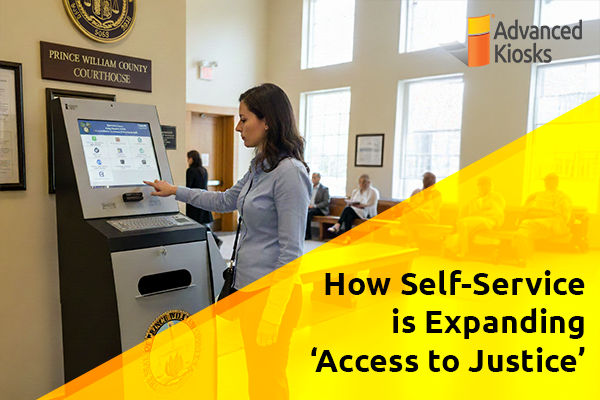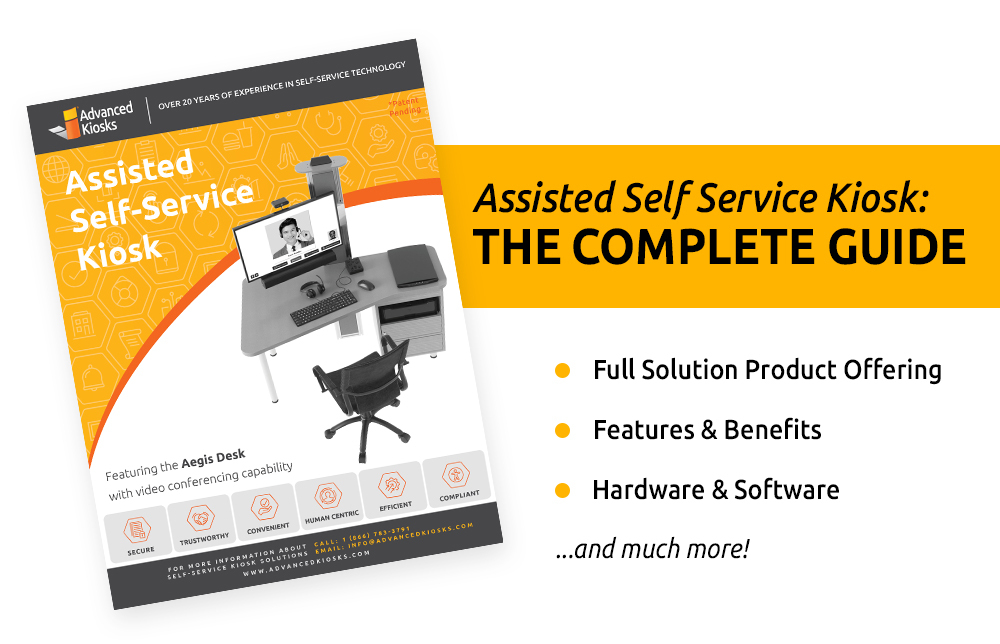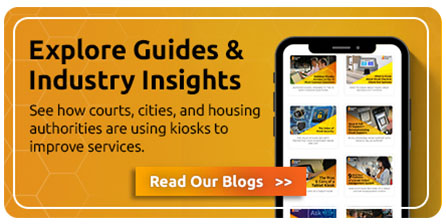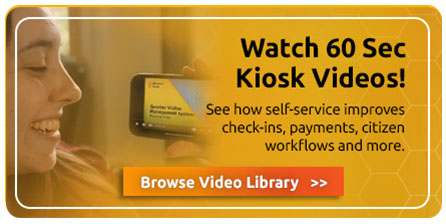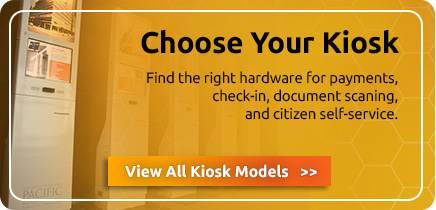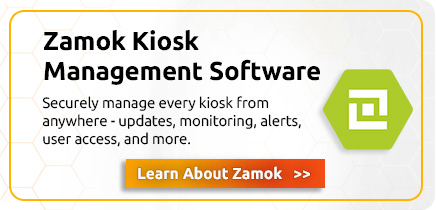What is ‘Access to Justice’?
Access to Justice is the principle that all citizens should be able to understand, use, and benefit from the legal system—regardless of background, income, or ability.
According to the Legal Services Corporation, 92% of low-income Americans do not receive any or enough legal help with their substantial civil legal problems.
This inequity is largely driven by the high cost of legal representation, a shortage of public resources, and the complexity of court processes that are difficult to navigate without professional guidance. For many, even routine tasks like filing a form, submitting documentation, or attending a hearing can be overwhelming or logistically impossible- especially in rural communities or for those with disabilities.
Courts and law enforcement agencies across the country are feeling this pressure firsthand. Their front desks are flooded with administrative tasks, while citizens struggle to access information or complete required steps within limited business hours. As a result, the justice system becomes less accessible to those who need it most.
That’s where technology is beginning to bridge the gap. From online filing systems to interactive kiosks placed in courthouses, police stations, and libraries, digital transformation is creating new pathways to equity.
Two of the most effective approaches come from Advanced Kiosks: the Kiosk Office Suite, designed for shorter, task-based interactions, and the Assisted Self-Service Kiosk (ASK 3.0), built for longer, guided sessions that may require document handling or live assistance. Together, they demonstrate how thoughtful design and secure technology can make justice more accessible to all.
The Shared Challenge: Barriers to Access
Across the justice system, both courts and law enforcement agencies face mounting challenges in meeting public demand for timely, equitable service. These challenges aren’t rooted in a lack of commitment- they stem from systems that were never designed for today’s pace or complexity.
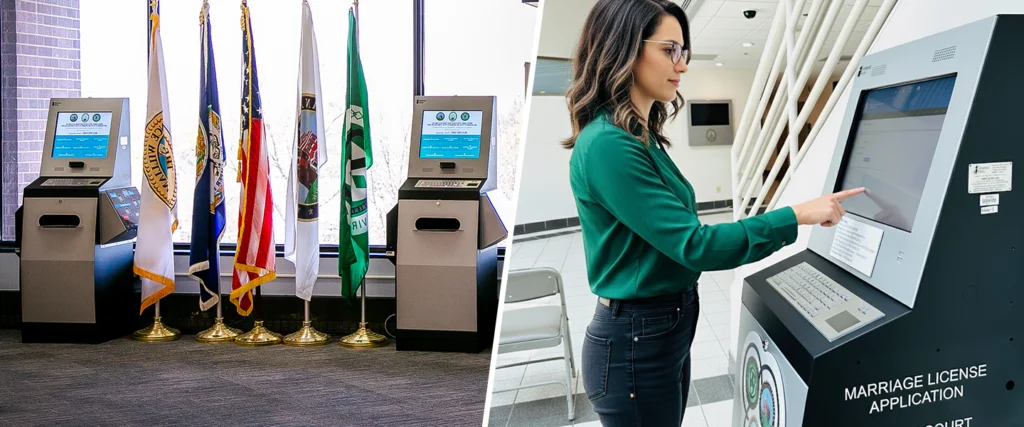
For Courts, the barriers are often structural. Limited operating hours mean that individuals who work during the day struggle to access essential services. Complex filing requirements and outdated paper processes create bottlenecks for both staff and the public.
Even when online portals exist, many citizens lack the digital literacy, language skills, or reliable internet access to use them effectively. The result is crowded lobbies, long wait times, and clerks pulled away from higher-value work to answer routine questions or assist with forms.
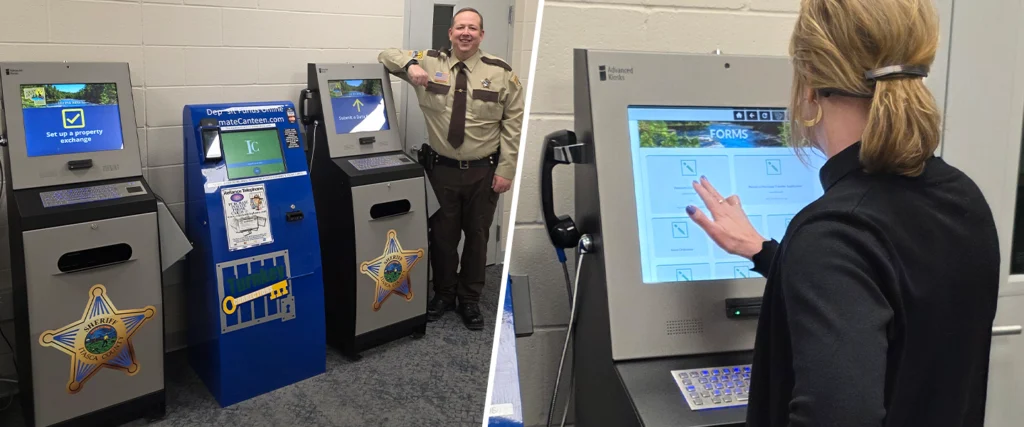
For Law Enforcement, the challenges take a different shape but lead to the same outcome: delayed access and administrative strain. Front desk staff are tasked with processing property releases, public records requests, report filings, and fee payments—all while maintaining security and handling incoming calls.
When these functions depend entirely on in-person service, operational efficiency and community trust both suffer. Many police departments now recognize that improving accessibility isn’t just about convenience—it’s about transparency, accountability, and rebuilding confidence in public institutions.
Ultimately, both sectors are being asked to do more with less—to deliver fair, reliable service to an increasingly diverse population, often without the staff or funding to expand hours or locations.
That’s why agencies are turning to technology as an equalizer—creating secure, guided, and self-directed ways for citizens to complete tasks without waiting in line or depending on limited staff availability.
The Technology Bridge: Self-Service Access Points
Technology has become the essential bridge between the public and the institutions that serve them. Over the last decade, many courts and police departments have made strides toward digital transformation—offering online forms, appointment scheduling, and e-filing portals. Yet even the most advanced systems leave a gap: how to serve those who can’t easily access or navigate these tools on their own.
That’s where self-service access points come in. These are physical, public-facing stations that give citizens a secure, guided way to complete critical tasks without staff assistance. By combining hardware, software, and remote support capabilities, self-service kiosks bring digital justice into the real world—right where people live, work, and seek help.
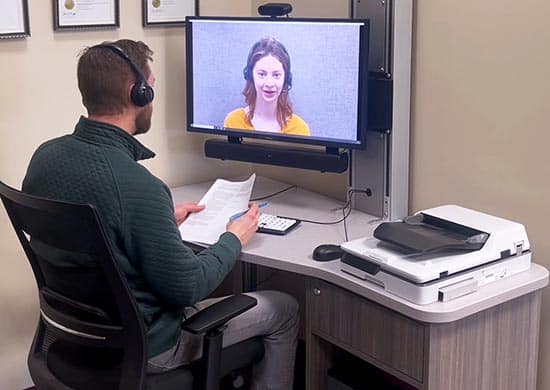
In a courthouse, that might mean a kiosk in the lobby where individuals can:
- Search case information or file documents electronically
- Scan, print, or submit required forms
- Pay court fees securely
- Connect with a clerk or interpreter through video call
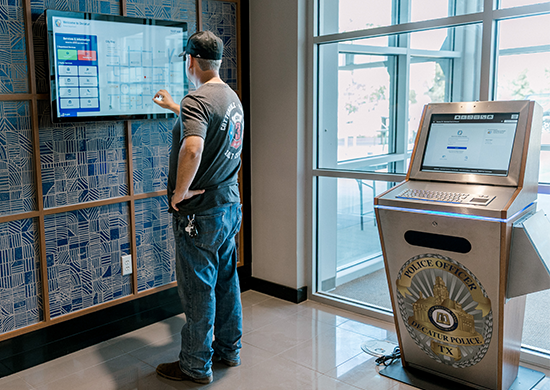
In a police department, it could mean a secure workstation that allows residents to:
- File incident or property reports
- Request public records
- Pay fines or fees
- Initiate a remote call with an officer or clerk during after-hours periods
These access points don’t replace human service—they extend it. By automating routine functions and providing intuitive guidance, they reduce barriers while preserving the personal connection between agencies and the public.
The most effective systems also prioritize security, privacy, and accessibility, ensuring compliance with ADA standards and protecting sensitive data through advanced kiosk management software.
This is the vision behind Advanced Kiosks’ dual self-service platforms—the Kiosk Office Suite and the Assisted Self-Service Kiosk (ASK 3.0)—each addressing different interaction needs while supporting the same mission of equitable access.
Self-Service Solutions for Every Interaction
Both the Kiosk Office Suite and ASK 3.0 are built to simplify access to government services, but they serve distinct roles within the justice system.
The Kiosk Office Suite is ideal for quick, task-based interactions such as submitting forms, making payments, or retrieving information. Its intuitive interface, secure session management, and ADA-compliant design make it well-suited for high-traffic areas like courthouse lobbies and police station entrances. It helps agencies handle frequent, low-complexity requests efficiently—freeing staff to focus on more complex or sensitive matters.
The Assisted Self-Service Kiosk complements this by supporting longer, guided sessions that require additional tools or assistance. With built-in document scanning and printing, VOIP integration for live help, and multilingual accessibility options, ASK 3.0 allows citizens to complete more detailed processes such as filing court documents, requesting public records, or connecting remotely with legal aid representatives.
Together, these systems create a balanced approach to access: fast, independent service where possible, and extended, assisted support when needed.
Real-World Impact: Where They Fit
Courts and law enforcement agencies are finding new ways to integrate self-service into their operations.
In Courthouses:
- Kiosk Office Suite units handle high-volume, short-duration interactions like payments or case lookups.
- ASK 3.0 kiosks provide extended functionality for form submission, legal aid calls, or document scanning.
In Law Enforcement Agencies:
- Kiosk Office Suite streamlines records requests and payments.
- ASK 3.0 enables more detailed services such as property release, remote assistance, or after-hours intake.
By combining these two systems, agencies can cover the full spectrum of citizen needs—from quick self-service to extended, supported interaction—without increasing staff load or operating costs.
Looking Ahead: Building a Modern Justice Experience
As courts and law enforcement agencies continue modernizing, their shared mission remains clear: to make justice accessible, equitable, and efficient for everyone. The path forward depends on offering the right mix of access points—fast, focused interactions through the Kiosk Office Suite, and extended, assisted sessions through ASK 3.0.
Together, they form a flexible, scalable model for the modern justice experience.
See real-life examples of how ‘access to justice’ is being expanded by Courts and Law Enforcement.

